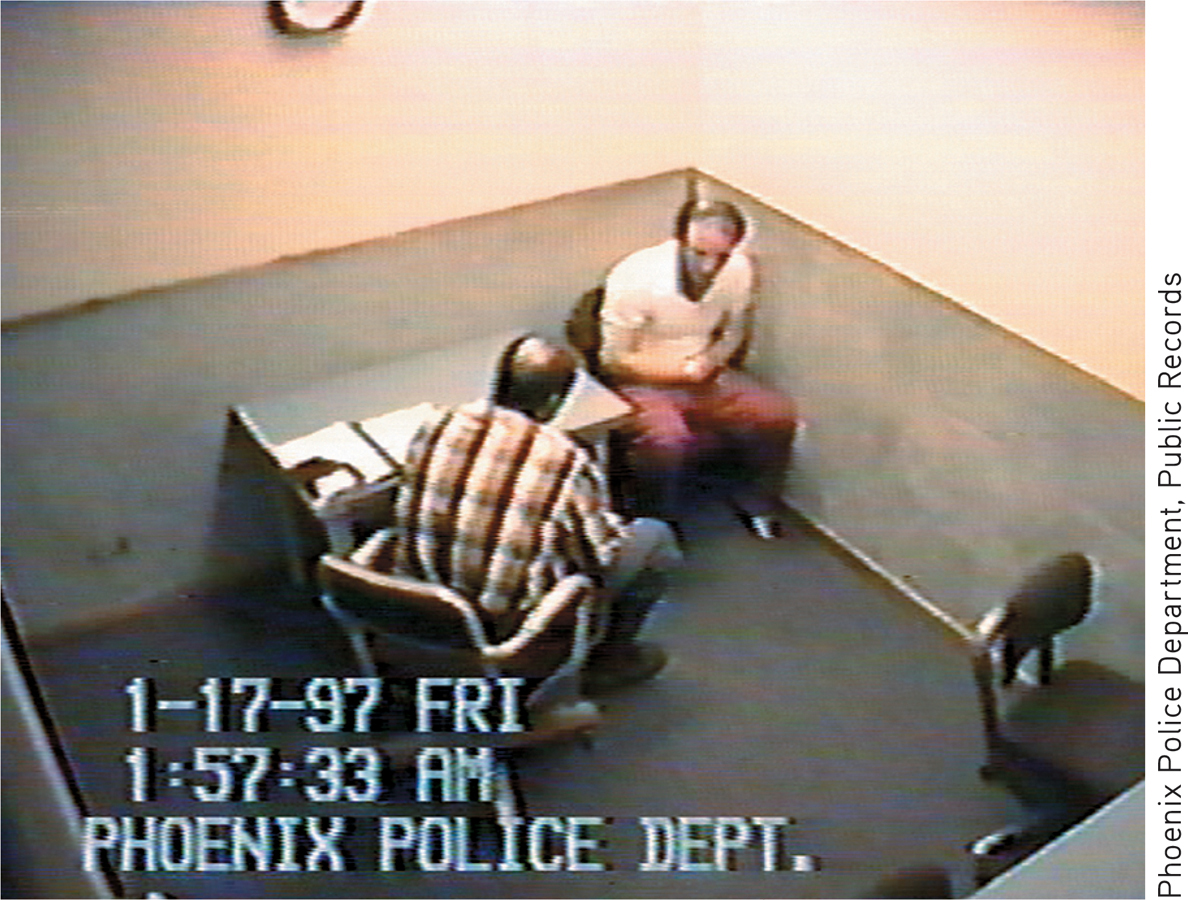Chapter Introduction

MYTH OR SCIENCE?
Is it true …

That multi-tasking is an efficient way to get things done?
That you can have coherent conversations with people who are talking in their sleep?
That sleeping pills are an effective way to treat chronic insomnia?
That it can be dangerous to wake a sleepwalker?
That you can be hypnotized against your will?
That meditation is a drowsy, trancelike state that is no different from simple relaxation?
That alcohol is a stimulant?
4
Consciousness and Its Variations
Moment/Getty Images
A Knife in the Dark
PROLOGUE
IN THIS CHAPTER:
INTRODUCTION: Consciousness: Experiencing the “Private I”
Biological and Environmental “Clocks” That Regulate Consciousness
Sleep
Dreams and Mental Activity During Sleep
Sleep Disorders
Hypnosis
Meditation
Psychoactive Drugs
PSYCH FOR YOUR LIFE: Overcoming Insomnia
SCOTT HAD SOME SLEEPWALKING episodes as he was growing up, but his parents weren’t overly concerned about them. Sleepwalking is pretty common among kids. “I remember Scott getting dressed at midnight, glassy-eyed, saying he had to go to school,” Scott’s mother recalled. Scott wasn’t the only sleepwalker in the family. Two of his younger siblings were also sleepwalkers.
Scott’s sister, Laura, remembers another sleepwalking incident. At the time, she was 15 and Scott was five years older. “Scott was getting ready to get married that June and he was coming up on college finals, and he was stressing,” Laura recalled. Scott wandered into the kitchen with a glazed facial expression. As he reached the back door and began fumbling with the doorknob, Laura realized that her older brother was sleepwalking. She quickly leaned around him to lock the deadbolt. That’s when Scott grabbed her. “He kind of lifted me up and tossed me,” Laura recalls. “His face looked almost demonic when he reacted to me. It really scared the hell out of me.”
Scott eventually married his high school sweetheart, Yarmila, and had two children. The family settled in Phoenix and Scott worked as a managing engineer for a technology company. By all accounts, Scott and Yarmila’s marriage was happy, revolving around their children and Scott’s involvement with a teen ministry program at their church.
During most of 1996, Scott was under tremendous pressure at work. A new product line that Scott’s team had been developing—a hard-drive chip—was not living up to its promise. But abandoning the project would also eliminate his co-workers’ jobs. It was a no-win situation.
The work pressure continued. Scott often went for night after night with three hours of sleep or less. To stay alert and focused at work, he resorted to taking caffeine tablets, 200 milligrams a pop. After several nights in a row with very little sleep, Scott would “crash” early to catch up on his sleep.
Finally, Scott got into a heated exchange with his boss. It was decided that the following day Scott would meet with his work group and explain that their project would probably be cancelled.
At dinner that night, Scott discussed the troubling work situation with his family. Around 9:00 p.m., after the kids were in bed, Scott went out to the backyard to work on the broken swimming pool pump but eventually gave up.
Back in the house, Yarmila had fallen asleep on the couch in the family room, the television still on. It was close to 10:00 p.m. Scott kissed her goodnight, went upstairs, changed into his pajama bottoms, and “crashed.”
Less than an hour later, Scott was startled awake by the sound of their two dogs barking wildly. Disoriented and confused, he rushed downstairs. Two police officers, guns drawn, yelled at him to get facedown on the floor.
“What’s going on?” Scott asked as he complied.
For an hour, Scott sat handcuffed in the back of a police car. He caught bits and pieces of the comments being made by the police officers and emergency personnel. At first he thought that Yarmila had been seriously hurt and that the police were searching for the person who had done it. But then he realized he was wrong. Yarmila was dead.
It was almost 2:00 a.m. when a Phoenix Police Department detective began interrogating Scott. “What set this thing off, got it going?” the detective asked.
As he sat huddled in the corner of the interrogation room, Scott replied, “Obviously, you think I killed her. I don’t know what makes you think that.”
“Because a neighbor watched you do it, that’s why.”
“I’m sorry. I don’t remember doing it,” Scott answered, then paused. “How did she die?”
“Well, the neighbor says you stabbed her and dragged her over to the pool and held her under the water. From what people are telling me about you guys, you spend a lot of time in the church. A quiet family, so this is really out of character. I want to know what went on, what would lead to something like this? What did she do to set you off like that?”
“Nothing.”
“Okay, then what did you do to set yourself off like that? Something set you off, Scott.”
“I’m sorry, I just don’t know.”

“Nothing went wrong?”
“I love my wife. I love my kids.”
Scott had stabbed Yarmila 44 times, then left her floating facedown in the pool. But he had no memory of his actions.
Could Scott have unknowingly committed such violent acts while he was sleepwalking? Is it possible for someone to carry out complex actions, like driving, while asleep?
In this chapter, we’ll tackle those questions and others as we explore variations in our experience of consciousness. As you’ll see, psychologists have learned a great deal about our daily fluctuations of consciousness. Psychologists have also gained insight into the different ways that alterations in consciousness can be induced, such as through the use of hypnosis, meditation, or psychoactive drugs. We’ll return to Scott’s story to help illustrate some of these concepts. 